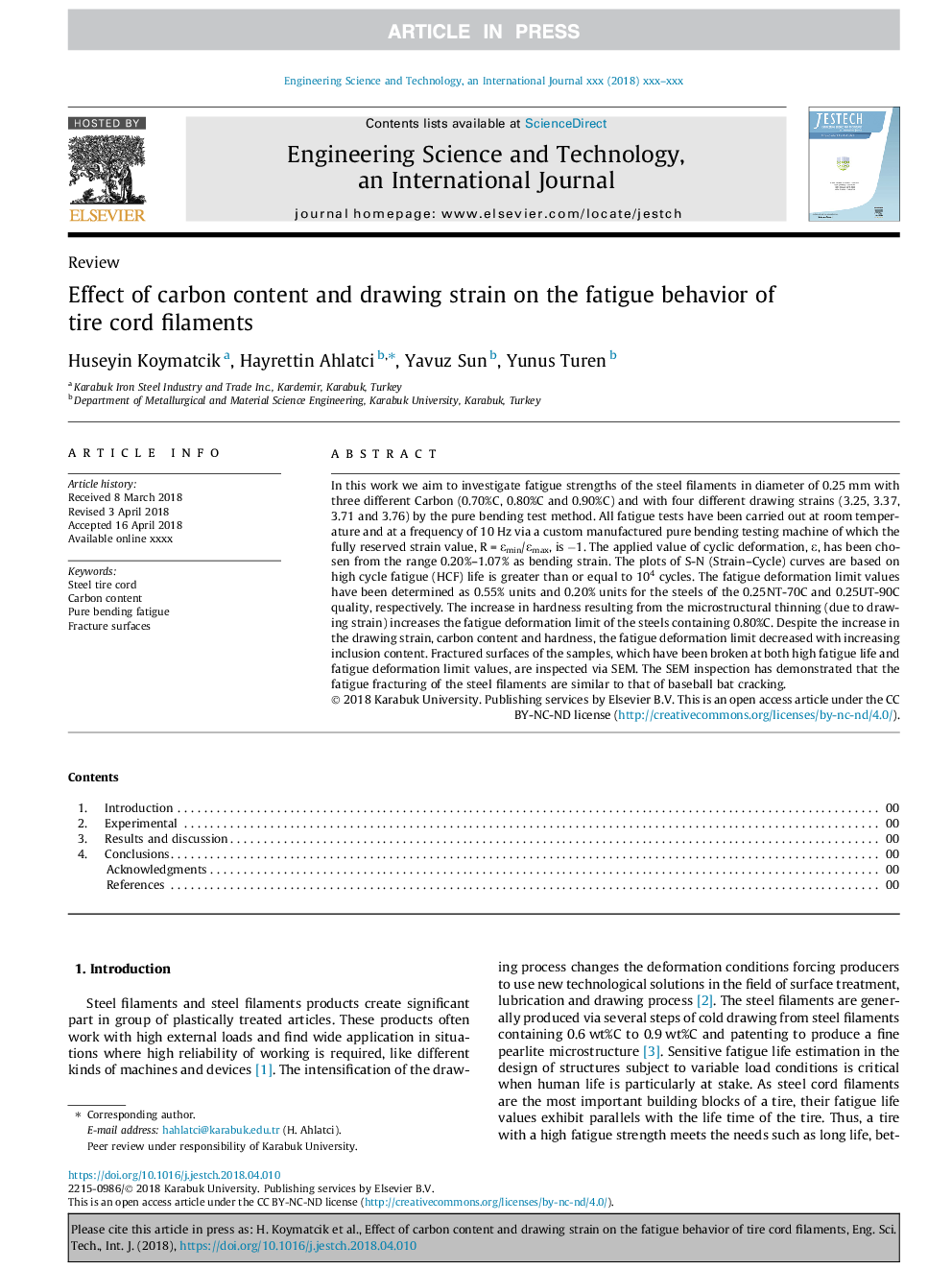| Article ID | Journal | Published Year | Pages | File Type |
|---|---|---|---|---|
| 6893570 | Engineering Science and Technology, an International Journal | 2018 | 8 Pages |
Abstract
In this work we aim to investigate fatigue strengths of the steel filaments in diameter of 0.25â¯mm with three different Carbon (0.70%C, 0.80%C and 0.90%C) and with four different drawing strains (3.25, 3.37, 3.71 and 3.76) by the pure bending test method. All fatigue tests have been carried out at room temperature and at a frequency of 10â¯Hz via a custom manufactured pure bending testing machine of which the fully reserved strain value, Râ¯=â¯Îµmin/εmax, isâ¯â1. The applied value of cyclic deformation, ε, has been chosen from the range 0.20%-1.07% as bending strain. The plots of S-N (Strain-Cycle) curves are based on high cycle fatigue (HCF) life is greater than or equal to 104 cycles. The fatigue deformation limit values have been determined as 0.55% units and 0.20% units for the steels of the 0.25NT-70C and 0.25UT-90C quality, respectively. The increase in hardness resulting from the microstructural thinning (due to drawing strain) increases the fatigue deformation limit of the steels containing 0.80%C. Despite the increase in the drawing strain, carbon content and hardness, the fatigue deformation limit decreased with increasing inclusion content. Fractured surfaces of the samples, which have been broken at both high fatigue life and fatigue deformation limit values, are inspected via SEM. The SEM inspection has demonstrated that the fatigue fracturing of the steel filaments are similar to that of baseball bat cracking.
Keywords
Related Topics
Physical Sciences and Engineering
Computer Science
Computer Science (General)
Authors
Huseyin Koymatcik, Hayrettin Ahlatci, Yavuz Sun, Yunus Turen,
